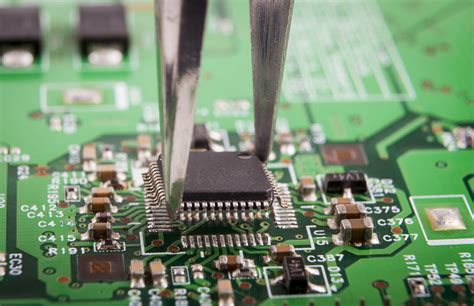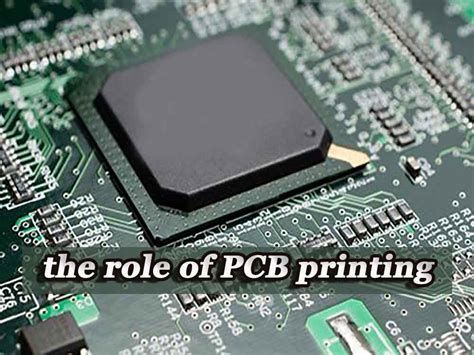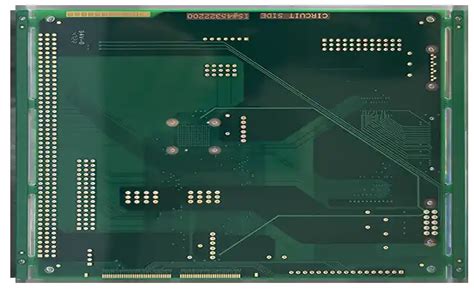About the design skills of printed circuit boards
At present, electronic equipment used in various electronic equipment and systems still uses printed circuit boards as the main assembly method. Practice has proved that even if the circuit schematic is designed correctly, improper design of the printed circuit board will have an adverse effect on the reliability of electronic equipment. For example, if two thin parallel lines on the printed circuit board are close to each other, the signal waveform will be delayed and reflected noise will be formed at the terminal of the transmission line. Therefore, when designing printed circuit boards, attention should be paid to using the correct method. A. Ground wire design In electronic equipment, grounding is an important method to control interference. If grounding and shielding can be used correctly in combination, most interference problems can be solved. The ground wire structure in electronic equipment generally includes system ground, chassis ground (shielded ground), digital ground (logic ground) and analog ground. The following points should be noted in ground wire design

A. Ground wire design In electronic equipment, grounding is an important method to control interference.
If grounding and shielding can be used correctly in combination, most interference problems can be solved. The ground wire structure in electronic equipment generally includes system ground, chassis ground (shielded ground), digital ground (logic ground) and analog ground. The following points should be noted in the ground design:
- Correctly choose single-point grounding and multi-point grounding In low-frequency circuits, the operating frequency of the signal is less than 1MHz, and the inductance between its wiring and devices has little effect, while the loop formed by the ground circuit has a greater impact on interference, so one-point grounding should be used. When the signal operating frequency is greater than 10MHz, the ground impedance becomes very large. At this time, the ground impedance should be reduced as much as possible, and multi-point grounding should be used nearby. When the operating frequency is between 1 and 10MHz, if one-point grounding is used, the length of the ground should not exceed 1/20 of the wavelength, otherwise multi-point grounding should be used.
- Separate digital circuits from analog circuits There are both high-speed logic circuits and linear circuits on the circuit board. They should be separated as much as possible, and the ground wires of the two should not be mixed, and they should be connected to the ground wires of the power supply end respectively. Try to increase the ground area of the linear circuit.
- Thicken the ground wire as much as possible If the ground wire is very thin, the ground potential will change with the change of current, causing the timing signal level of the electronic equipment to be unstable and the anti-noise performance to deteriorate. Therefore, the ground wire should be as thick as possible so that it can pass the three-position allowable current of the printed circuit board. If possible, the width of the ground wire should be greater than 3mm.
- Make the ground wire into a closed loop When designing the ground wire system of a printed circuit board composed only of digital circuits, making the ground wire into a closed loop can significantly improve the anti-noise ability. The reason is that there are many integrated circuit components on the printed circuit board. Especially when there are components that consume a lot of power, due to the limitation of the thickness of the ground wire, a large potential difference will be generated on the ground junction, causing the anti-noise ability to decrease. If the ground structure is made into a loop, the potential difference will be reduced, and the anti-noise ability of the electronic equipment will be improved.
B. Electromagnetic compatibility design
Electromagnetic compatibility refers to the ability of electronic equipment to work in a coordinated and effective manner in various electromagnetic environments. The purpose of electromagnetic compatibility design is to enable electronic equipment to suppress various external interferences, so that electronic equipment can work normally in a specific electromagnetic environment, and at the same time reduce the electromagnetic interference of electronic equipment itself to other electronic equipment.
- Choose a reasonable wire width. Since the impact interference generated by transient current on the printed line is mainly caused by the inductance component of the printed wire, the inductance of the printed wire should be minimized. The inductance of the printed wire is proportional to its length and inversely proportional to its width, so short and fine wires are beneficial to suppress interference. The signal lines of clock leads, row drivers or bus drivers often carry large transient currents, and the printed wires should be as short as possible. For discrete component circuits, the printed wire width of about 1.5mm can fully meet the requirements; for integrated circuits, the printed wire width can be selected between 0.2 and 1.0mm.
- Adopt the correct wiring strategy. Using equal routing can reduce the wire inductance, but the mutual inductance and distributed capacitance between the wires increase. If the layout allows, it is best to use a tic-tac-toe mesh wiring structure. The specific method is to wire horizontally on one side of the printed board and vertically on the other side, and then connect them with metallized holes at the cross holes. In order to suppress crosstalk between the wires of the printed board, long-distance equal routing should be avoided as much as possible when designing the wiring.
C. Decoupling capacitor configuration
In a DC power supply circuit, changes in load will cause power supply noise. For example, in a digital circuit, when the circuit switches from one state to another, a large peak current will be generated on the power line, forming a transient noise voltage. Configuring decoupling capacitors can suppress the noise caused by load changes. It is a common practice for the reliability design of printed circuit boards.
The configuration principles are as follows:
● A 10~100uF electrolytic capacitor is connected across the power input terminal. If the position of the printed circuit board allows, the anti-interference effect of using an electrolytic capacitor of more than 100uF will be better.
● Configure a 0.01uF ceramic capacitor for each integrated circuit chip. If the printed circuit board space is small and cannot be installed, a 1~10uF tantalum electrolytic capacitor can be configured for every 4~10 chips. The high-frequency impedance of this device is particularly small, and the impedance is less than 1Ω in the range of 500kHz~20MHz, and the leakage current is very small (below 0.5uA).
●For devices with weak noise resistance, large current changes when turned off, and storage devices such as ROM and RAM, decoupling capacitors should be directly connected between the power line (Vcc) and the ground line (GND) of the chip. ●The lead of the decoupling capacitor should not be too long, especially the high-frequency bypass capacitor should not have leads.
D. Size of printed circuit board and layout of devices
The size of the printed circuit board should be moderate. If it is too large, the printed lines will be long and the impedance will increase, which will not only reduce the anti-noise ability but also increase the cost; if it is too small, the heat dissipation will be poor and it will be easily interfered by the adjacent lines. In terms of device layout, like other logic circuits, related devices should be placed as close as possible to obtain better anti-noise effect. The clock input terminals of the clock generator, crystal oscillator and CPU are all prone to noise and should be close to each other. Devices that are prone to noise, small current circuits, large current circuits, etc. should be kept as far away from the logic circuit as possible. If possible, a separate circuit board should be made. This is very important.
E. Heat dissipation design
From the perspective of heat dissipation, the printed circuit board is best installed upright, and the distance between the boards should generally not be less than 2cm. In addition, the arrangement of devices on the printed circuit board should follow certain rules: ·For equipment using free convection air cooling, it is best to arrange the integrated circuits (or other devices) in a longitudinal manner; for equipment using forced air cooling, it is best to arrange the integrated circuits (or other devices) in a horizontal manner. ·The devices on the same printed circuit board should be arranged according to their heat generation and heat dissipation as much as possible. Devices with low heat generation or poor heat resistance (such as small signal transistors, small-scale integrated circuits, electrolytic capacitors, etc.) should be placed at the uppermost stream (entrance) of the cooling airflow, and devices with high heat generation or good heat resistance (such as power transistors, large-scale integrated circuits, etc.) should be placed at the lowest downstream of the cooling airflow. ·In the horizontal direction, high-power devices should be arranged as close to the edge of the printed circuit board as possible to shorten the heat transfer path; in the vertical direction, high-power devices should be arranged as close to the top of the printed circuit board as possible to reduce the impact of these devices on the temperature of other devices when they are working.
Components that are sensitive to temperature should be placed in the lowest temperature area (such as the bottom of the device).
Never place it directly above the heating device. Multiple components should be arranged in a staggered manner on the horizontal plane. ·The heat dissipation of the printed circuit board in the equipment mainly depends on air flow, so when designing, it is necessary to study the air flow path and reasonably configure the components or printed circuit boards. When air flows, it always tends to flow to places with low resistance, so when configuring components on the printed circuit board, it is necessary to avoid leaving a large airspace in a certain area.
About Printed Circuit Boards
Printed circuit boards, also known as printed circuit boards, printed wiring boards, or printed boards for short, are abbreviated as PCB (printed circuit board) or PWB (printed wiring board) in English. They are based on insulating boards, cut into a certain size, with at least one conductive pattern attached to them, and are provided with holes (such as component holes, fastening holes, metallized holes, etc.), which are used to replace the chassis of the previous electronic components and realize the interconnection between electronic components. Since this board is made by electronic printing, it is called a “printed” circuit board. It is not accurate to call “printed circuit board” “printed circuit” because there are no “printed components” on the printed board but only wiring.
It is an important electronic component and a support for electronic components.
PCB panel specifications
1 PCB panel width ≤260mm (SIEMENS line) or ≤300mm (FUJI line); if automatic dispensing is required, PCB panel width × length ≤125 mm × 180 mm
2 The panel shape should be as close to a square as possible. It is recommended to use 2×2, 3×3, … panels; but do not make yin-yang panels
3 PCB panel outer frame (clamping edge) should adopt a closed loop design to ensure that the PCB panel will not deform after being fixed on the fixture
4 The center distance between small boards is controlled between 75 mm and 145 mm
5 There should be no large or protruding devices near the connection points between the panel outer frame and the internal small board, and between small boards, and there should be a space of more than 0.5mm between the components and the edge of the PCB board to ensure the normal operation of the cutting tool
6 Open four positioning holes at the four corners of the panel frame, with a diameter of 4mm±0.01mm; the strength of the holes should be moderate to ensure that they will not break during the process of loading and unloading the boards; the diameter and position accuracy should be high, and the hole wall should be smooth and free of burrs
7 Each small board in the circuit board panel must have at least three positioning holes, 3≤diameter≤6mm, and wiring or patching is not allowed within 1mm of the edge positioning hole
8 The reference symbols used for the whole board positioning of the circuit board and for the positioning of fine-pitch devices, in principle, should be set at the diagonal position of the QFP with a spacing less than 0.65mm; the positioning reference symbols used for the panel circuit board should be used in pairs and arranged at the diagonal positions of the positioning elements. 9 When setting the reference positioning point, usually leave a solder mask-free area 1.5 mm larger than the positioning point around it.
Since the printed circuit board is not a general terminal product, the definition of the name is slightly confusing. For example, the motherboard used in personal computers is called the mainboard, and cannot be directly called a circuit board. Although there is a circuit board in the motherboard, they are not the same. Therefore, when evaluating the industry, the two are related but cannot be said to be the same. Another example: because there are integrated circuit parts mounted on the circuit board, the news media calls it an IC board, but in fact it is not equivalent to a printed circuit board.

Plate
The PCB design is completed because the PCB board shape is too small to meet the production process requirements, or a product is composed of several PCBs, so it is necessary to piece together several small boards into a large board with an area that meets the production requirements, or to piece together multiple PCBs used in a product to facilitate the production of electrical equipment. The former is similar to a stamp board, which can meet the PCB production process conditions and is also convenient for the electrical installation of components. It can be separated when used, which is very convenient; the latter is to assemble several sets of PCB boards of a product together, which is convenient for production and also convenient for a product to be complete and clear. Thus, large-scale production can be carried out, cost can be saved, and good economic benefits can be generated!







